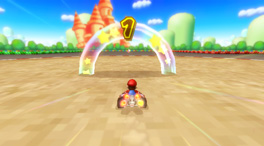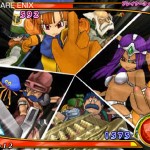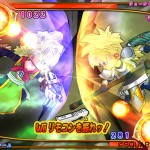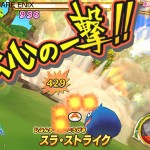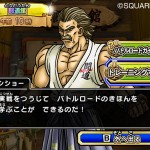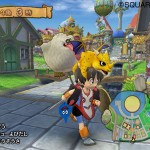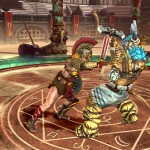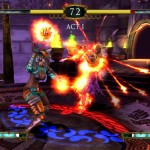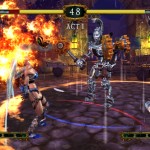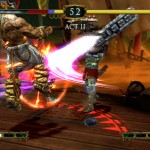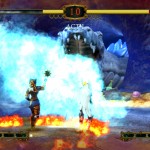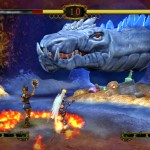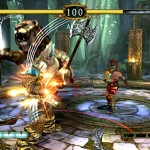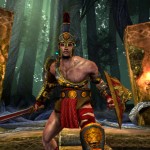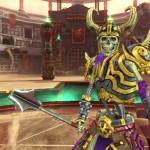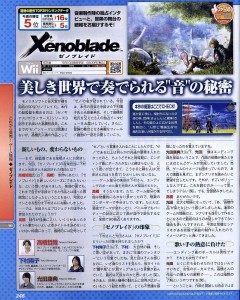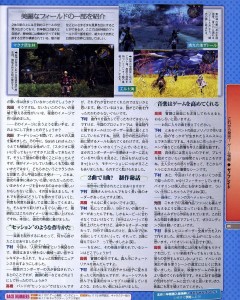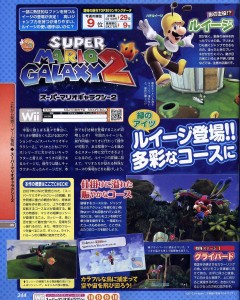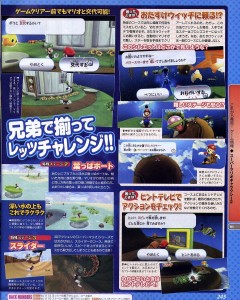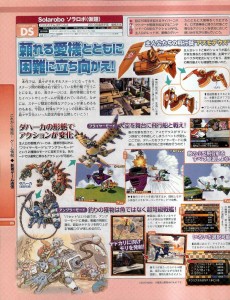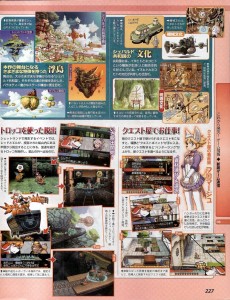Mario Kart Wii tournament – Battle Course 3 gates
Posted on 15 years ago by Brian(@NE_Brian) in News, Wii | 0 comments
Course: Battle Course 3
Objective: Pass through the gates
Restriction: Wii Wheel
Tournament date: 5/15 – 5/25
Dragon Quest Monsters Battle Road Victory screenshots, details, site
Posted on 15 years ago by Brian(@NE_Brian) in News, Screenshots, Wii | 0 comments
– Releasing July 15th in Japan
– ¥6,090
– The card-scanning application for DSiWare DSiWare card-scanning app also will be released the same day, will cost 200 points
Thanks to Thomas N for the tip!
Tournament of Legends screenshots
Posted on 15 years ago by Brian(@NE_Brian) in Screenshots, Wii | 0 comments
Pachter: Only 3DS will be interesting from Nintendo at E3, Nintendo looks bad long-term
Posted on 15 years ago by Brian(@NE_Brian) in 3DS, DS, News, Wii | 15 Comments
The following information comes from Wedbush analyst, Michael Pachter, who was asked which company he’d rather be at E3…
“It really depends on this 3DS and how good it is, because I don’t think Nintendo has anything else. Nintendo is on the verge of – certainly not dropping into third place or anything – losing its dominance, because I really truly believe that Sony Move is the Wii HD. I really believe it. That’s been my quote: I told everyone a Wii HD was coming this year, it just happens to say PS3 on the box. It is the Wii HD.
That’s a very easy upsell for Sony to say, ‘If you have a Wii and you really want to play high-def games on your new big high-def TV, we’ve got ’em.’ Sony is a winner and Nintendo is a loser on the console side, because the Wii Vitality Sensor isn’t going to excite anybody. But the 3DS will. If you look at Nintendo’s line-up, everything we care about is either out or known by now.
People are going to like Microsoft more than we expect. Microsoft isn’t concerned about the gaming community with Natal, they’re concerned about the gaming community’s mothers and girlfriends. I really do think the gaming press has completely missed the mark on this one, that Natal is not intended for you to get up there and pretend you’re holding a rifle and playing Call of Duty. It’s intended for your mum to use the frickin’ 360 to download a movie or watch Netflix and to make it less intimidating. The cool thing about Natal is the voice command. ‘Xbox on.’ I mean, that’s cool. People will really like it when they see it and they begin to appreciate what it is.
But I will say Sony up, Microsoft neutral and Nintendo down on the console side.
If the 3DS is anything like those little 3D point-and-click cameras, because that screen technology is pretty cool and I’m sure it is that, it will really get people excited. Question is: what does it cost? If they get $189 for a DSi XL, do they think they’re going to get $300 for a 3DS? I don’t know. Maybe they will, but that’s a tough purchase for me. The 3DS is coming along at a really good time for them. I don’t think it’s good for the DSi XL. If they launch the thing [the 3DS] prior to holiday, I can’t imagine why anybody would buy a DSi XL this holiday.
Longer term, Nintendo does really start to look bad as Apple really starts to push the iPod Touch as a gaming device, and that’s happening this holiday. Again, the gaming press hasn’t figured it out. The gaming press doesn’t really understand the 12-year-old customer, nor do you guys care. Who plays DS games? Them, not us. Nintendo’s got problems this year but the 3DS will make them look great at E3.
That’s the manufacturer side. On the publisher side: Microsoft looks really good, they have a lot of content this year. People get psyched about Halo and Alan Wake will have just come out… Fable III. They have good content. I’m not sure who else anybody cares about. It’s all sequels: this year’s Call of Duty, etc. We’ve had a front-end-loaded year. We might see the Call of Duty action-adventure game but I don’t think anybody is going to get excited about that.
This is more a hardware show than in the past.”
Hmmm…I don’t even know where to begin here. The 3DS will be interesting for sure, but what about Zelda Wii? I have a good feeling that title will end up impressing quite a few gamers. Also, we know relatively nothing about the 3DS. Sure, it plays 3D games, but what else? There are bound to be other features for the system. Don’t forget that have yet to see any software for the handheld as well.
Another Super Mario Galaxy 2 Japanese comemrcial
Posted on 15 years ago by Brian(@NE_Brian) in Videos, Wii | 3 Comments
All about Xenoblade’s soundtrack
Posted on 15 years ago by Brian(@NE_Brian) in News, Wii | 0 comments
“I wanted the soundtrack to have a different atmosphere from the games I’ve worked on up to now, and that’s why I asked Shimomura to be our main contributor. Once development began to gather steam, we got to a point where we had to pick a title from a list of candidates. In the end, we decided to include ‘Xeno’ as a sort of symbol for the game. I wanted it to have some sort of aspect in common with the Xeno games of the past, and around that time I also realized that the ending wouldn’t work without a vocal song. All that combined meant that Mitsuda was the only person I could really ask.” – game producer Tetsuya Takahashi
“It definitely feels like high fantasy, what with all the pristine nature and clear blue skies. Yet, at the same time, you look at the tentative list of track names and there’s titles lke ‘Shoulder Map’ and ‘Shin Meadow,’ and I thought someone was joking with me at first! I remember how odd it all seemed when I learned about how the game takes place atop the bodies of giant gods.” – Yoko Shimomura, composer
“The game was mostly complete by the time I came along. The feel of the game was already set in stone, of course, but I still asked if I could read the script first, which turned out to be absolutely huge — I didn’t know if I could get myself to read through all of it, but I managed it anyway. It’s a really epic tale, very much a Takahashi production.” – Yasunori Mitsuda, composer
“The game’s structured around this clash between man and machine, so I’m putting in a lot of sounds I don’t normally use alongside electric guitars to give the music a confrontational nuance. I had a request from Takahashi for this incredibly long track — long for me, anyway; around nine minutes. It had to match up with a movie, too, so I was all ‘No way I can do nine minutes!’ Then his request changed; he said to me ‘I still need nine minutes, but change it up in the middle,’ so now he was basically requesting two songs from me!” – Yoko Shimomura, composer
– 90 tracks
– Shimomura in charge of the composers
– Mitsuda worked on the ending music
– Ending music sung by Sarah Lim
I’ve been incredibly impressed with the music we’ve heard so far for Xenoblade. I highly suggest taking a peek at the game’s teaser site if you already haven’t. The compositions on there are worth listening to!
